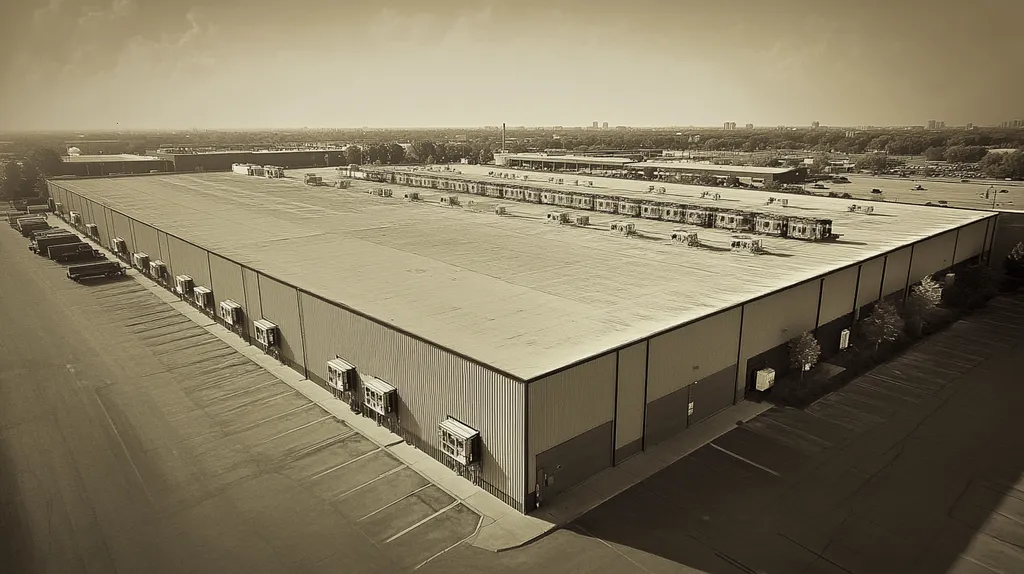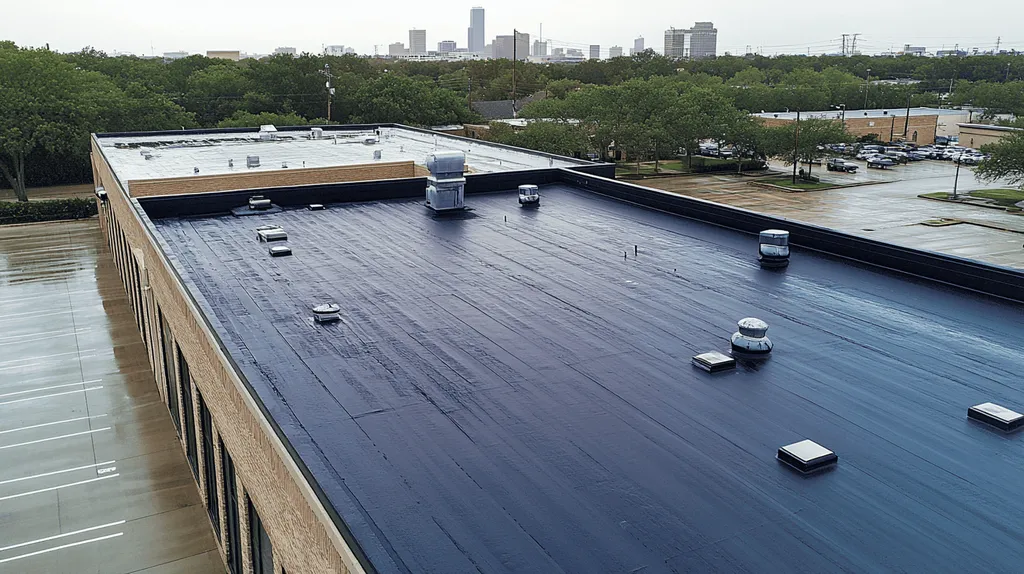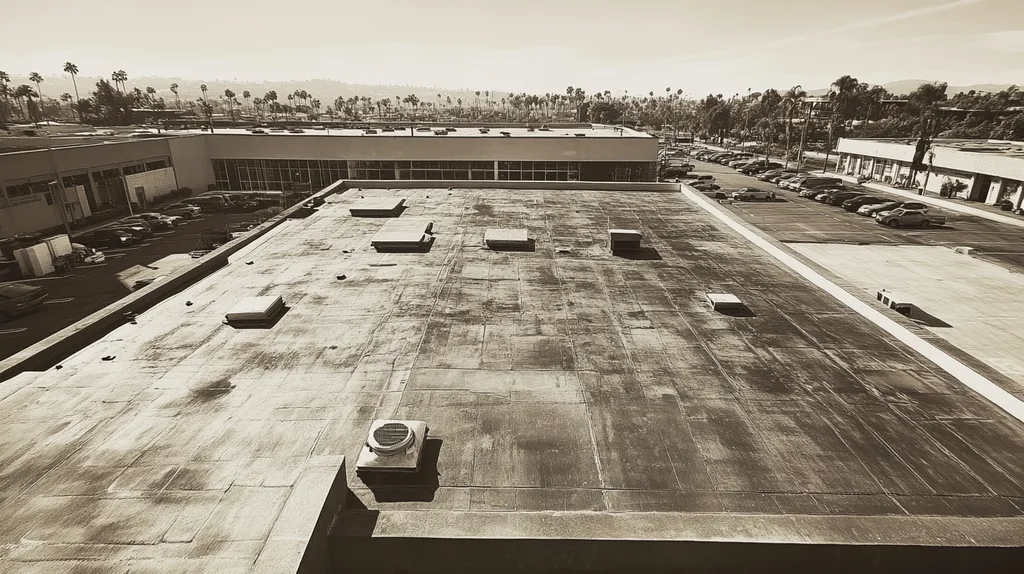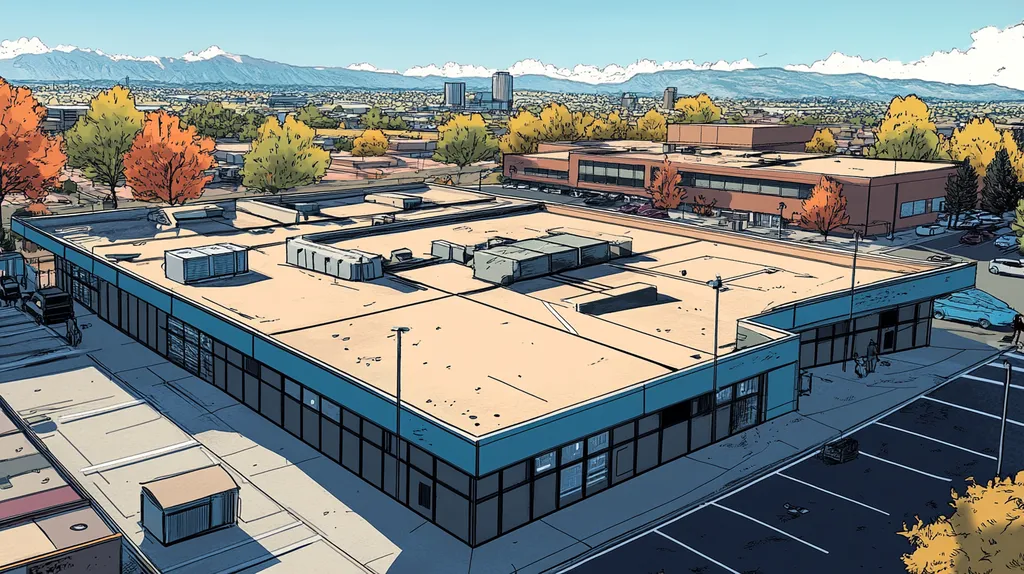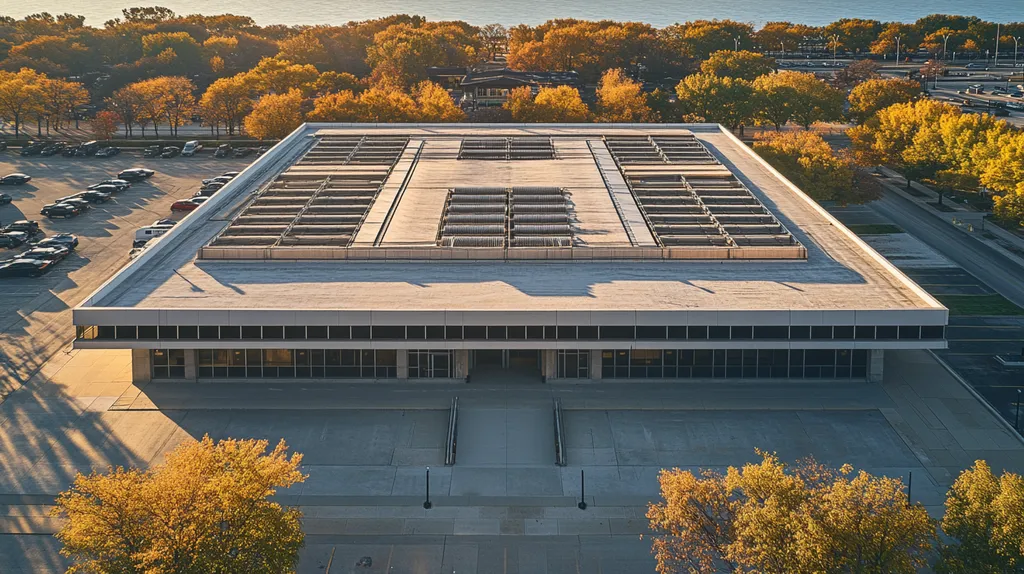Commercial roof failures cost property owners over $5 billion annually in repairs, asset damage, and business interruptions, with studies showing that 80% of these incidents stem from inadequate initial inspections.
Understanding the critical elements of commercial roof inspection helps facility managers prevent catastrophic failures while protecting both structural integrity and operational continuity.
This comprehensive guide breaks down the essential components of professional roof inspection, from documentation requirements to advanced diagnostic techniques, providing property owners with actionable insights for maintaining their roofing investments.
SECTION 1: THE BASICS EXPLAINED
Commercial roof failures cost businesses billions annually in repairs, inventory damage, and operational disruptions. Professional roof inspections serve as the first line of defense against these costly issues, yet many property owners struggle to understand their critical components. This foundation section breaks down the inspection process into clear, actionable elements that directly impact building performance and asset protection.
What It Is (In Plain Language)
A commercial roof inspection is a systematic evaluation that identifies current and potential roofing issues before they become major problems. This comprehensive assessment examines all roofing components, from membrane integrity to drainage systems.
During the inspection, certified professionals examine both exterior and interior elements. This includes checking for water infiltration in ceiling spaces, assessing membrane seams, and evaluating flashing conditions around roof penetrations.
Modern inspections utilize advanced diagnostic tools like infrared scanning and moisture detection equipment. These technologies help identify hidden issues that visual inspection alone might miss, particularly in large commercial installations.
Why It Matters (To Your Building)
A properly maintained roof protects millions in building assets, from sensitive electronics to inventory and manufacturing equipment. Regular inspections help prevent unexpected failures that could halt operations and create significant financial losses.
Building codes and insurance requirements increasingly mandate documented roof inspections. Failure to maintain inspection records can void warranties, complicate insurance claims, and create liability issues.
Energy efficiency directly correlates with roof condition. Compromised roofing systems can increase heating and cooling costs by up to 40%, making regular inspections crucial for controlling operational expenses.
How It Works
Professional roof inspections should occur at least twice yearly, with additional checks following severe weather events. The process begins with interior examinations for water damage signs, followed by comprehensive exterior evaluations of the roof surface, searching for ponding water, holes, and cracks. (source: Nations Roof)
Inspectors document findings through detailed photography and measurements. This documentation creates a baseline for tracking roof condition over time and planning maintenance schedules.
Core sampling may be necessary to assess underlying roof composition and moisture content. These samples help determine remaining service life and guide decisions about repair versus replacement.
The inspection concludes with a detailed report outlining current conditions, identifying immediate concerns, and recommending preventive maintenance steps. This information becomes the foundation for strategic roof management planning.
SECTION 2: PRACTICAL APPLICATIONS
Commercial roof inspections represent a critical investment protection strategy, with industry data showing that undetected roofing issues can reduce building value by up to 40%. Understanding the practical applications of professional inspections helps facility managers prevent catastrophic failures, maintain warranty compliance, and optimize building performance. This section explores the key implementation aspects of roof inspections, their critical timing, and how they interface with other building systems.
Common Uses & Examples
Professional roof inspections serve multiple essential functions in commercial property management. They establish baseline conditions for warranty documentation, verify installation quality, and create detailed maintenance records that protect owner interests during insurance claims.
Quality assurance inspections during installation prevent costly defects by identifying issues like improper membrane attachment or insufficient slope before project completion. These evaluations often reveal problems invisible to untrained observers, such as inadequate substrate preparation or incorrect flashing details.
Asset management programs rely on inspection data to forecast capital expenditures and optimize maintenance budgets. Regular evaluations help identify emerging issues before they escalate into major repairs, allowing for strategic planning of resources.
Compliance inspections ensure adherence to local building codes and insurance requirements. These mandatory evaluations often focus on specific components like fire barriers, drainage systems, and structural integrity.
When You Need It Most
New roof installations require multiple inspection phases to ensure proper execution. Pre-installation inspections verify deck conditions and material compatibility, while in-progress evaluations confirm proper technique and material application.
Severe weather events necessitate immediate roof assessment to document damage and prevent secondary issues. High winds, hail, and heavy snow loads can compromise roofing systems in ways that may not be immediately apparent.
Seasonal transitions demand focused inspections to prepare for changing environmental conditions. Fall inspections ensure proper drainage before winter, while spring evaluations address any damage from freeze-thaw cycles.
Building modifications or equipment installations require specialized inspections to maintain system integrity. Any penetration or addition to the roof assembly presents potential failure points that must be properly evaluated and documented.
Interactions With Other Systems
Roofing systems directly impact HVAC efficiency through their thermal performance characteristics. Regular inspections help maintain optimal insulation values and identify areas where energy loss may occur through compromised materials or poor detailing.
Building envelope interactions require careful monitoring, particularly at wall-to-roof transitions and expansion joints. These critical junctions often experience differential movement that can compromise weatherproofing if not properly maintained.
Electrical and mechanical systems mounted on roofs create specific inspection requirements. Proper evaluation ensures that equipment supports, penetrations, and service paths maintain watertight integrity while allowing necessary maintenance access.
Lightning protection and safety systems require integration with roof inspections to maintain certification and functionality. Regular evaluation ensures these critical systems remain properly bonded and secured without compromising roof integrity.
SECTION 3: KEY TERMINOLOGY DECODED
Technical roofing terminology creates critical communication barriers that directly impact project outcomes and costs. Industry studies show that terminology misunderstandings contribute to over 30% of warranty disputes and installation errors. Clear comprehension of roofing terminology enables property owners to make informed decisions, effectively communicate with contractors, and maintain proper documentation for warranty compliance.
Essential Terms Explained
The foundation of roofing knowledge begins with understanding key structural components. The membrane system serves as the primary waterproofing layer, while the substrate provides the supporting structure that determines load capacity and drainage characteristics.
Drainage components include internal drains, scuppers, and gutters that work together to channel water off the roof surface. Proper drainage design prevents ponding water, which can add significant weight stress to the structure.
Flashing systems protect the most vulnerable areas where different building components meet. These critical transition points include wall intersections, equipment curbs, and penetrations through the roof surface.
Understanding these fundamental elements helps property owners identify potential weak points and prioritize maintenance efforts. Regular inspection of these components forms the basis of effective preventive maintenance programs.
Industry Jargon Translated
Each type of roof inspection focuses on specific components and conditions. General contractors examine installation quality and material compliance, while specialized inspectors may utilize advanced diagnostic tools to detect hidden moisture issues. (source: Procore)
R-value measurements indicate insulation effectiveness, with higher values reflecting better thermal resistance. This metric directly impacts building energy efficiency and operating costs.
Common roofing abbreviations include TPO (Thermoplastic Polyolefin), EPDM (Ethylene Propylene Diene Monomer), and PVC (Polyvinyl Chloride). These materials offer different performance characteristics for various climate conditions.
Understanding terminology around seam types helps evaluate installation quality. Factory seams typically offer superior strength compared to field-applied seams, which require careful inspection during installation.
Measurement & Units Simplified
Roofing measurements use specific units that affect material quantities and costs. A “square” equals 100 square feet of roof area, while slope is measured in units of vertical rise per 12 inches of horizontal run.
Material thickness specifications vary by type. Single-ply membranes are measured in mils (thousandths of an inch), while metal roofing uses gauge numbers, where lower numbers indicate thicker material.
Wind uplift resistance ratings indicate the negative pressure a roof system can withstand. These ratings, measured in pounds per square foot, determine appropriate material selection for different building heights and locations.
Warranty terms specify coverage duration and conditions in years, but equally important are the performance requirements that must be maintained. Understanding these metrics ensures proper maintenance compliance and protection of the warranty investment.
SECTION 4: DECISION FACTORS
Commercial roofing decisions carry significant financial implications, with research showing that improper material selection or installation can reduce a building’s operational lifespan by up to 40%. Understanding key decision factors helps property owners navigate complex choices that impact both immediate costs and long-term performance. Recent data indicates that over 85% of premature roof failures stem from inadequate initial planning rather than material defects.
Cost Considerations
Initial material and installation costs typically represent only 28% of a roof’s total lifetime expense. Understanding this cost distribution helps property owners make informed decisions that balance immediate budget constraints with long-term value.
Energy efficiency plays a crucial role in ongoing costs. High-performance roofing systems can reduce HVAC expenses by 15-30% compared to standard installations, creating significant operational savings over time.
Maintenance requirements vary dramatically between roofing systems. Some materials demand quarterly professional inspections and regular repairs, while others may need only annual maintenance, directly impacting long-term operational budgets.
Warranty coverage significantly affects lifetime costs. Premium materials often include longer warranty periods and more comprehensive coverage, potentially reducing future repair expenses.
Performance Trade-offs
Regularly inspecting and maintaining roof surfaces, drains, and downspouts forms the foundation of building performance optimization. Semi-annual professional inspections, combined with post-storm evaluations, help prevent catastrophic failures and maintain warranty compliance. (source: Travelers Insurance)
Material selection directly impacts building energy performance. Reflective membranes can reduce cooling loads by up to 25% in warm climates, while darker materials may benefit heating efficiency in colder regions.
Installation methods affect both immediate and long-term performance. Mechanical fastening might offer quicker installation but can create more potential failure points compared to fully-adhered systems.
Local climate conditions should guide material choices. Some systems excel in high-wind environments but may underperform in areas with frequent thermal cycling or chemical exposure.
Lifespan & Durability Factors
Material longevity varies significantly, with premium systems lasting up to three times longer than standard options. This extended lifespan often justifies higher initial investments through reduced replacement frequency.
Environmental resistance capabilities differ between systems. UV protection, chemical resistance, and impact durability all contribute to a roof’s effective service life and maintenance requirements.
Installation quality directly impacts system longevity. Proper detailing around penetrations and careful attention to manufacturer specifications can extend roof life by 25% or more.
Future modification flexibility matters for expanding facilities. Some systems accommodate later additions or equipment installations more easily than others, affecting long-term adaptability and maintenance costs.
SECTION 5: COMMON CHALLENGES
Commercial roof inspections represent a critical control point where overlooked issues can escalate into catastrophic failures. Industry data indicates that 40% of all commercial roof failures stem from inadequate initial inspections and oversight. These inspection challenges not only compromise building integrity but also lead to premature system failure, increased maintenance costs, and potential liability issues. Understanding and addressing common inspection pitfalls provides the foundation for effective long-term roof performance.
Frequent Problems & Solutions
Many inspections begin with infrared scanning to detect hidden moisture issues that visual inspection alone might miss. These advanced diagnostic tools reveal temperature discrepancies that signal potential water infiltration, particularly during periods of temperature change. (source: Procore)
Membrane seam evaluation presents significant challenges during inspections. Proper assessment requires systematic examination of all seam types, with particular attention to areas where different materials intersect or where thermal movement occurs.
Drainage system assessment often reveals critical deficiencies. Inspectors must verify proper slope, confirm drain functionality, and evaluate the condition of water barriers around penetrations and perimeter details.
Substrate condition evaluation demands particular attention during inspections. Detecting early signs of deterioration or moisture infiltration helps prevent structural compromise and extends system longevity.
Warning Signs To Watch For
Surface irregularities often indicate underlying problems. Blisters, ridges, or areas of ponding water suggest compromised adhesion or structural movement that requires immediate investigation.
Flashing deterioration around roof penetrations presents early warning signs. Careful examination of these high-stress areas helps identify potential failure points before leaks develop.
Changes in membrane texture or appearance signal material degradation. UV exposure, chemical contamination, or mechanical damage can compromise system integrity if not addressed promptly.
Interior indicators like ceiling stains or unusual odors warrant immediate roof inspection. These symptoms often reveal problems that have already bypassed primary waterproofing barriers.
Preventative Approaches
Documentation systems form the cornerstone of effective inspection programs. Detailed records of observations, repairs, and maintenance activities create valuable historical data for tracking system performance.
Regular moisture mapping helps identify problem areas before visible damage occurs. This proactive approach allows targeted maintenance that prevents minor issues from escalating into major repairs.
Coordination between different building systems requires careful attention during inspections. HVAC equipment, electrical conduits, and safety systems must maintain proper integration with the roof assembly.
Quality control programs that include multiple inspection phases during installation prevent many common issues. These programs ensure proper material handling, correct application techniques, and appropriate weather conditions during critical phases.
SECTION 6: NEXT STEPS & RESOURCES
Professional roof inspections represent a significant investment protection strategy, with industry data showing that 85% of premature roof failures stem from inadequate initial evaluations and oversight. Understanding how to select qualified providers, interpret industry standards, and access ongoing education resources helps property owners maximize their inspection investment while preventing costly oversights that can compromise building integrity.
Questions To Ask Providers
Comprehensive inspections should evaluate multiple components using advanced diagnostic tools to detect hidden issues that visual examination alone might miss. Each type of inspection requires specific expertise and equipment, from infrared scanning for moisture detection to core sampling for composition analysis. (source: Procore)
Request detailed information about the inspector’s certification status with major manufacturers and industry organizations. Valid certifications demonstrate ongoing technical education and commitment to evolving industry standards.
Verify the scope and methodology of their inspection process, including specific documentation protocols. Professional providers should outline their systematic approach to evaluation, including how findings will be recorded and reported.
Discuss their experience with your specific roofing system type and building category. Specialized knowledge of particular materials and applications significantly impacts inspection effectiveness.
Industry Standards & Guidelines
Major roofing organizations establish detailed inspection protocols that define minimum evaluation requirements. These guidelines specify inspection frequencies, documentation methods, and critical checkpoints for different roofing systems.
Building codes increasingly mandate specific inspection requirements for commercial structures. Understanding these regulations helps ensure compliance while protecting warranty coverage and insurance validity.
Material manufacturers publish detailed maintenance and inspection requirements for their systems. Following these guidelines precisely prevents inadvertent warranty violations while optimizing system performance.
Quality assurance programs often specify multiple inspection phases during installation and routine maintenance. These systematic evaluations help prevent installation errors and identify emerging issues before they escalate.
Further Learning Simplified
Professional associations offer extensive educational resources specifically designed for property owners and facility managers. These materials typically focus on practical decision-making skills rather than technical installation details.
Online training modules from major manufacturers provide valuable insights into system-specific inspection requirements. These resources often include detailed maintenance guidelines and troubleshooting protocols.
Technical bulletins from industry organizations highlight emerging inspection technologies and best practices. Regular review of these updates helps maintain current knowledge of evolving standards.
Regional roofing associations frequently conduct workshops focused on local climate challenges and regulatory requirements. These targeted programs address specific geographical considerations that impact inspection protocols.
The Bottom Line
Commercial roof inspections represent a $12 billion annual industry that directly impacts building longevity, operational costs, and risk management outcomes.
Research demonstrates that implementing systematic inspection protocols reduces total ownership costs by up to 40% while extending roof lifespans by an average of 7-10 years.
Property owners who prioritize comprehensive inspections during installation and maintain regular evaluation schedules protect their capital investments while preventing catastrophic failures that can cost millions in repairs and business interruption.
As building technologies advance and regulatory requirements evolve, professional roof inspections become increasingly critical for maintaining warranty compliance, optimizing energy efficiency, and ensuring long-term structural integrity.
Success depends on selecting qualified providers, following manufacturer guidelines, and maintaining detailed documentation throughout the roof’s service life.
FREQUENTLY ASKED QUESTIONS
Q. What is a commercial roof inspection process?
A. A commercial roof inspection is a systematic evaluation that identifies roofing issues. Certified professionals assess both exterior and interior elements, using advanced diagnostic tools to reveal hidden problems that visual inspections might miss. Regular inspections are crucial for preventing costly repairs and operational disruptions.
Q. When should a commercial roof inspection be done?
A. Inspections are recommended at least twice a year and after severe weather events. New roof installations require multiple inspections throughout the process to ensure quality. Seasonal transitions also necessitate focused evaluations to prepare for changing environmental conditions and potential roof issues.
Q. What terminology is important for commercial roof inspections?
A. Key terms include membrane systems, drainage components, and flashing systems. Understanding these components aids property owners in identifying potential weaknesses and prioritizing inspection efforts. Having a grasp of roofing jargon is essential to making informed decisions and effectively communicating with contractors.
Q. What factors influence the decision-making for commercial roofs?
A. Key decision factors include initial costs, long-term maintenance, and performance trade-offs. Property owners need to understand the balance between upfront investments and future operational costs to select the most effective roofing solutions. Material longevity and energy efficiency also play significant roles in these decisions.
Q. What common challenges arise during commercial roof inspections?
A. Common challenges include inadequate evaluations of membrane seams and drainage systems. Inspectors must pay close attention to hidden moisture issues and substrate conditions that could compromise the roof’s structural integrity. Infrared scanning can help identify problems that are not immediately visible.
Q. How can I select a qualified commercial roof inspection provider?
A. Request information regarding the inspector’s qualifications and experience with your roofing system type. Discuss the scope of their inspection process and their certification status with relevant industry organizations. Ensure they adopt a systematic approach to evaluations using advanced diagnostic technologies.
Q. What ongoing resources are available for commercial roof management?
A. Numerous professional associations offer educational resources tailored to property owners and facility managers. Online training modules, technical bulletins, and regional workshops focus on building maintenance and compliance, enhancing your understanding of proper roof care and inspection best practices.
Q. Why is documentation crucial in the inspection process?
A. Documentation provides a historical record of inspections, repairs, and maintenance activities. This information is critical for tracking system performance and compliance with warranty coverage. It helps property owners manage their roofing assets effectively and prevents costly oversights or disputes that could arise.


